Choosing the right flooring is one of the biggest design decisions you’ll make in any home — it sets the tone, adds texture and warmth, and has to stand up to real life. But if you’re aiming for a more sustainable home, the choice becomes about more than looks alone.
Eco-friendly flooring is all about sustainability and the use of less harmful materials and manufacturing processes. You can have a sustainable flooring in your home without compromising on style as there is a huge choice available, in all manner of colours, finishes and applications.
When generally thinking about a flooring choice, there are some obvious considerations. It should always be practical, but do you want something soft or hard underfoot? Cool or warm? Is it for a high-traffic area? Does it need to be waterproof?
But when thinking about sustainable flooring, there are further important considerations... what it’s made from, how it’s produced, how long it lasts, and even what happens to it at the end of its life.
Flooring is a longterm investment, so it is essential to select something that will last the test of time. Always opt for longevity over trend.
Let’s take a look at some of the most popular flooring types and explore their pros and cons from a sustainability point of view.
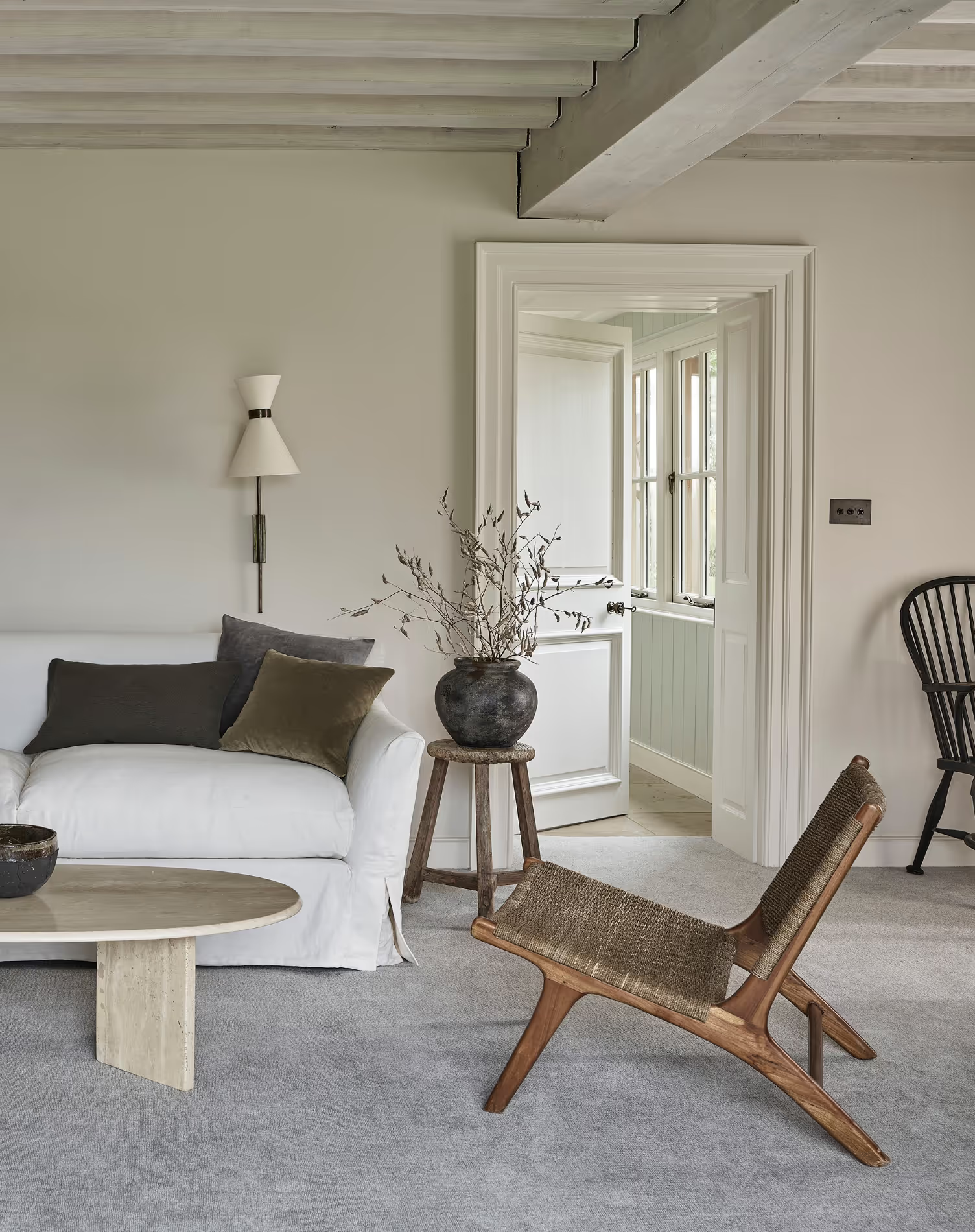
CREDIT: Jacaranda Carpets
If you’re after warmth and softness, wool carpet remains a classic choice. As a renewable and biodegradable fibre, wool brings natural comfort, excellent insulation, and a sense of luxury to bedrooms and living rooms. It’s also naturally flame-retardant and helps regulate indoor humidity — a real plus for healthy homes.
Wool carpet comes in a huge range of colours and designs too, to really put your stamp on a room.
Pros:
- 100% natural, renewable, and biodegradable.
- Good insulation properties, both in terms of sound and heat.
- Naturally flame-retardant and excellent at regulating humidity.
- Soft, warm, and luxurious underfoot.
- Comes in many colours and patterns.
Cons:
- Often more expensive than synthetic carpets but well worth the investment.
- Can be prone to moths, so choose natural treatments over chemical-based.
- Stains more easily than synthetics, though natural lanolin gives some protection.
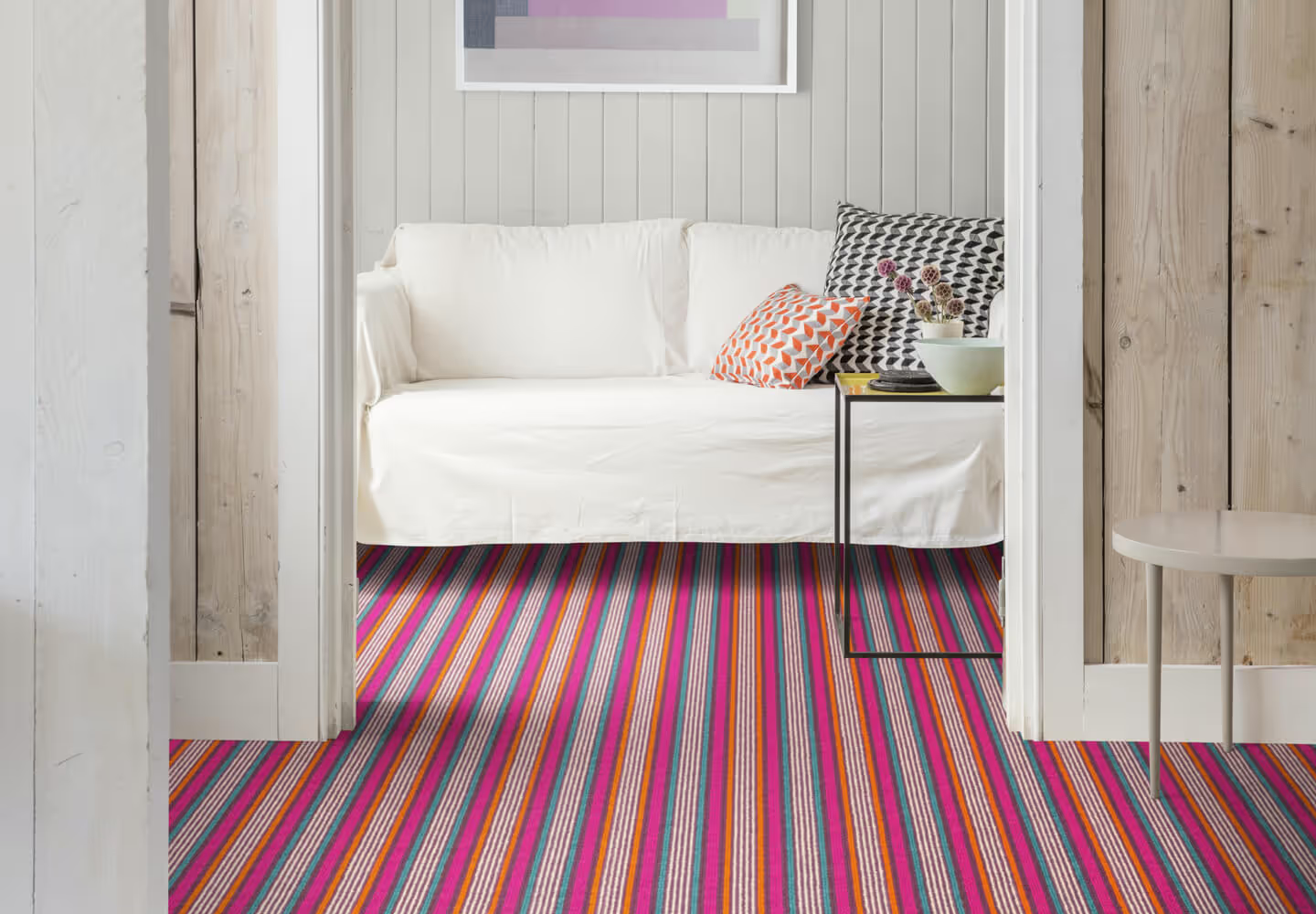
CREDIT: Alternative Flooring Co
Natural flooring is an elegant and eco-friendly option made from renewable plant fibres like sisal, jute, seagrass, and coir. Fitted like a carpet, it gives a beautifully organic texture that feels grounded and connected to nature. Perfect for living areas, hallways, and bedrooms, it brings a warm, tactile quality to a space — especially in homes designed with sustainability in mind.
Pros:
- Made from fast-growing, renewable plant fibres.
- Adds natural texture, warmth, and character to a room.
- Biodegradable and low-impact to produce.
- Works beautifully with layered rugs for extra softness or colour.
Cons:
- Not suitable for damp areas like bathrooms or kitchens as natural fibres can absorb moisture.
- Can stain easily, especially lighter weaves.
- Some types are rougher underfoot than wool.
- Professional fitting and underlay are recommended for best results.
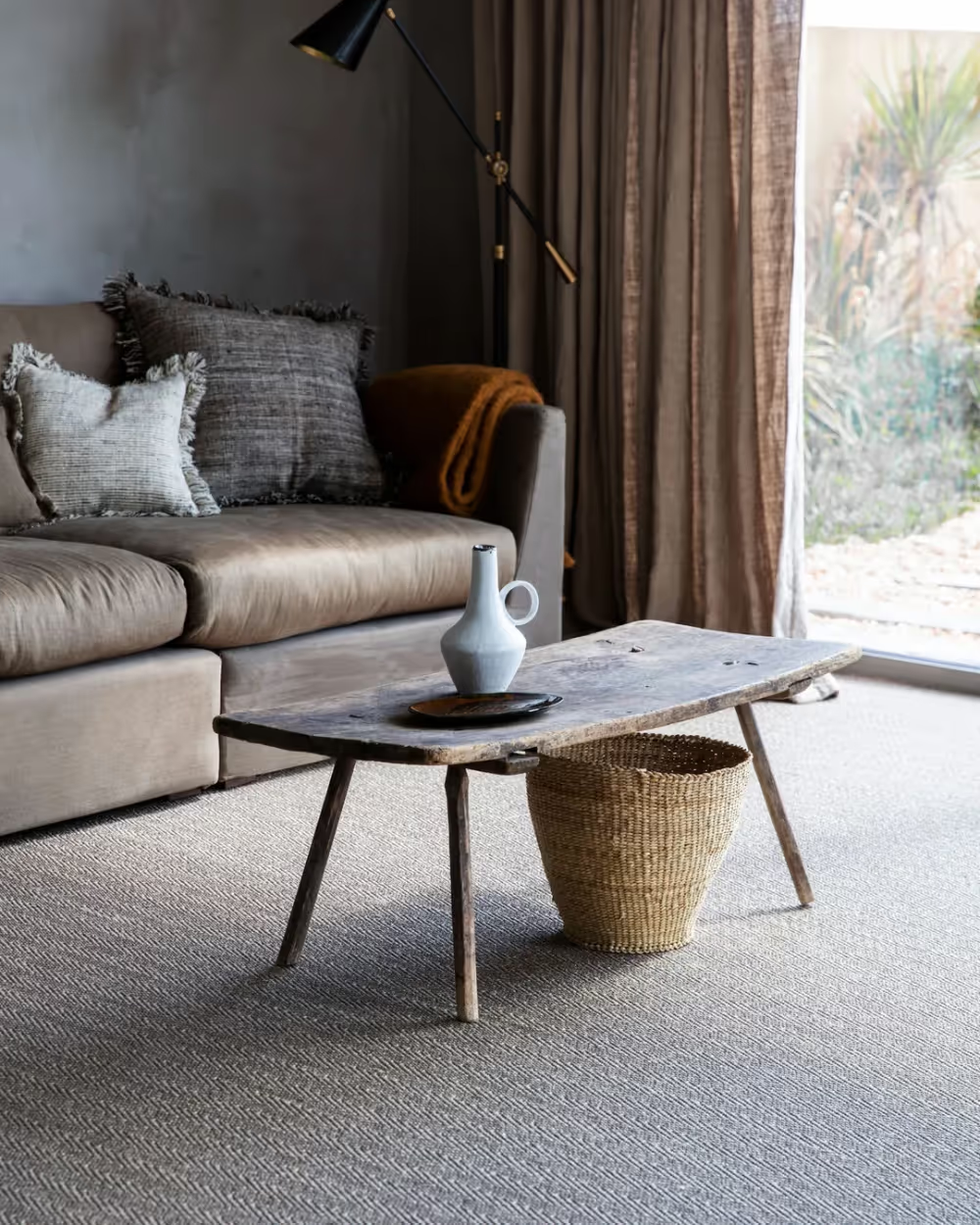
CREDIT:Alternative Flooring Co
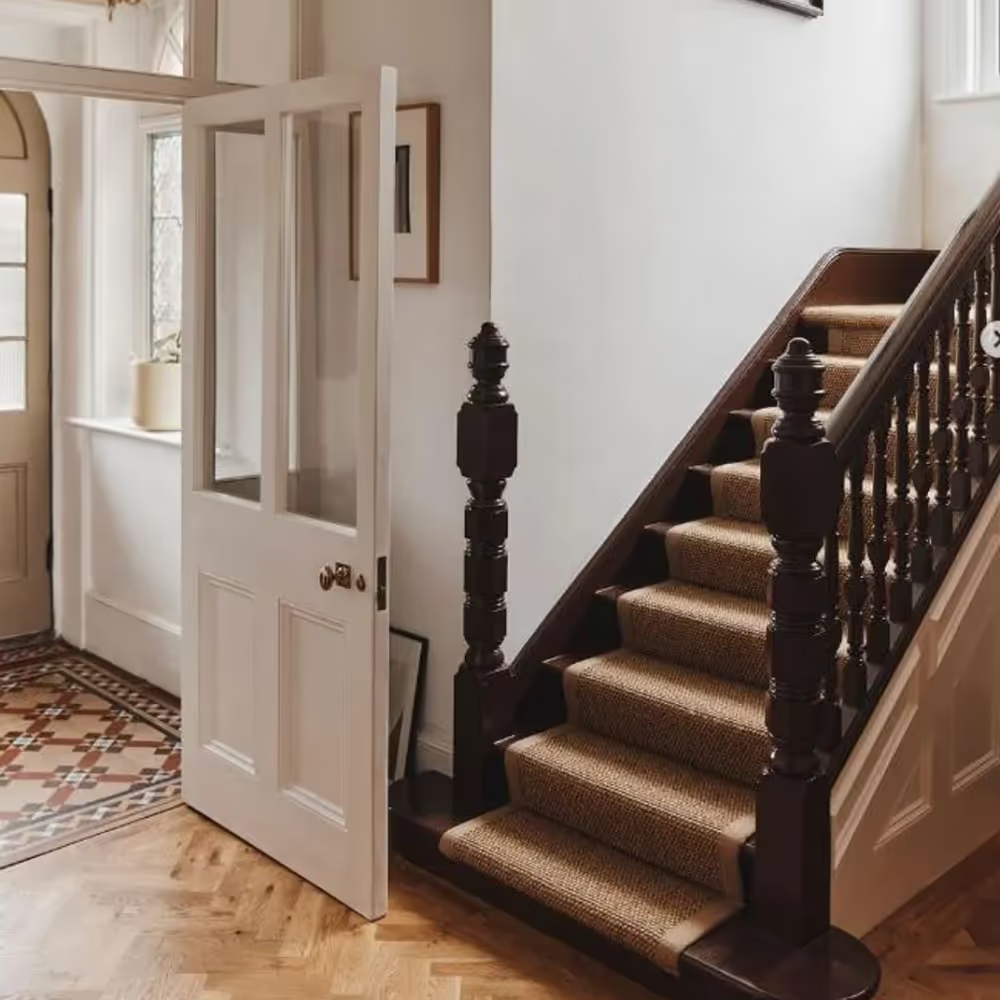
CREDIT: Alternative Flooring Co

CREDIT: Pavel Danilyuk
Laminate flooring has come a long way since its early days. Modern laminates can look impressively realistic, are affordable, and are easy to install, which makes them a popular choice for busy households.
From a sustainability perspective, laminate isn’t perfect — but if you choose carefully, it can still be a relatively low-impact option. One of the most important factors is longevity as cheap DIY store laminates do not last long.
Pros:
- Often made with a high proportion of recycled wood fibres or sawdust.
- Long-lasting, with many products now offering 20–30 year warranties.
- Look for options that are FSC or PEFC certified, meaning the wood content comes from responsibly managed forests.
- Many European brands now meet EU Ecolabel or A+ VOC emission standards, ensuring low chemical emissions.
- Easy to install as a floating floor, which can reduce the need for adhesives.
Cons:
- Not biodegradable or recyclable — once worn out, it usually goes to landfill.
- Some cheaper products may still contain formaldehyde-based resins.
- Can’t be sanded or refinished like real wood.
- Made with synthetic layers and resins, so not a natural product.
Tip: If you like the look of laminate but want a greener option, consider engineered wood flooring — it uses less solid wood than traditional planks but still offers the beauty and longevity of real timber.
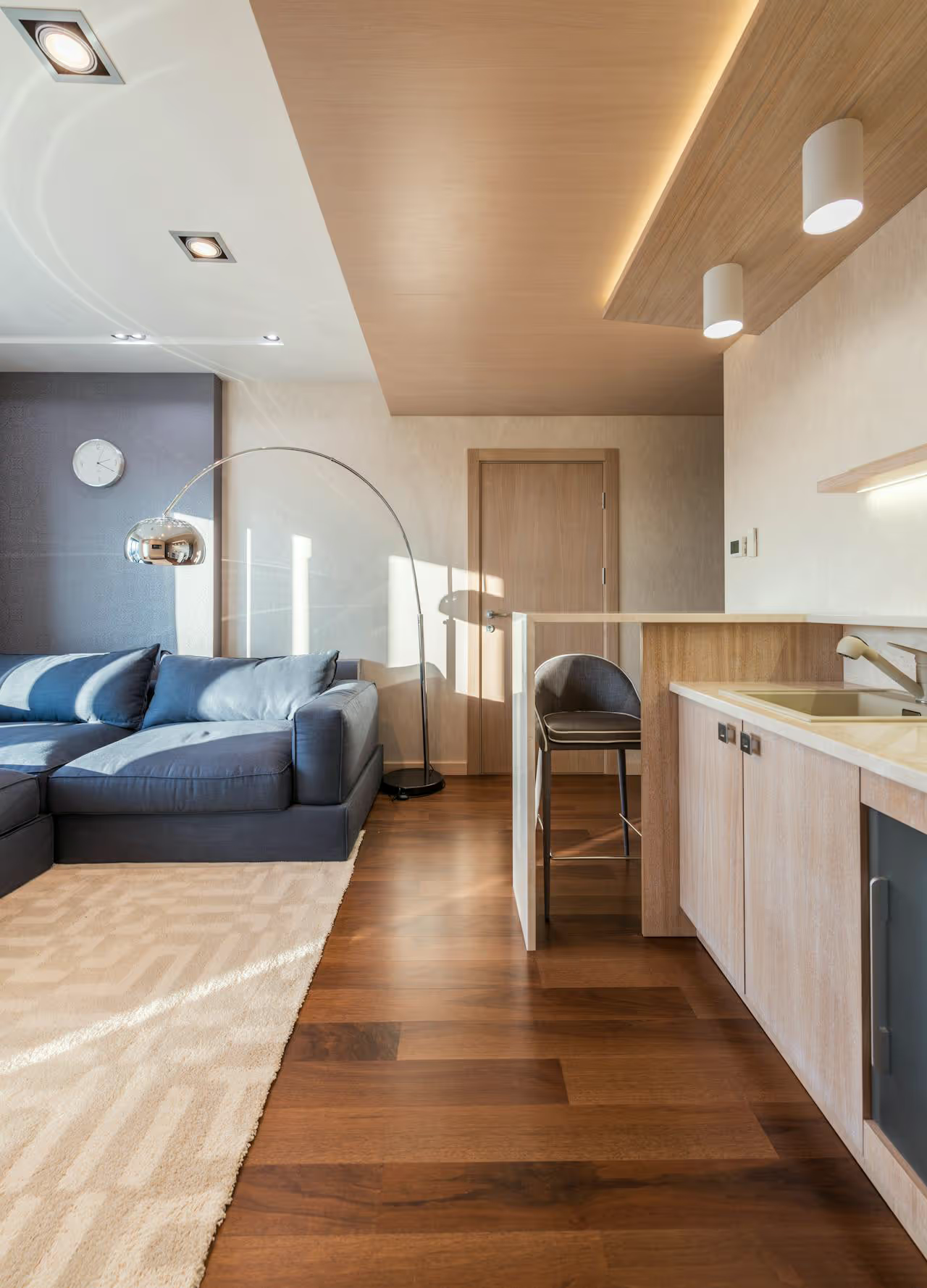
CREDIT: Max Vakhtbovycn

CREDIT: Vlada Karpovich
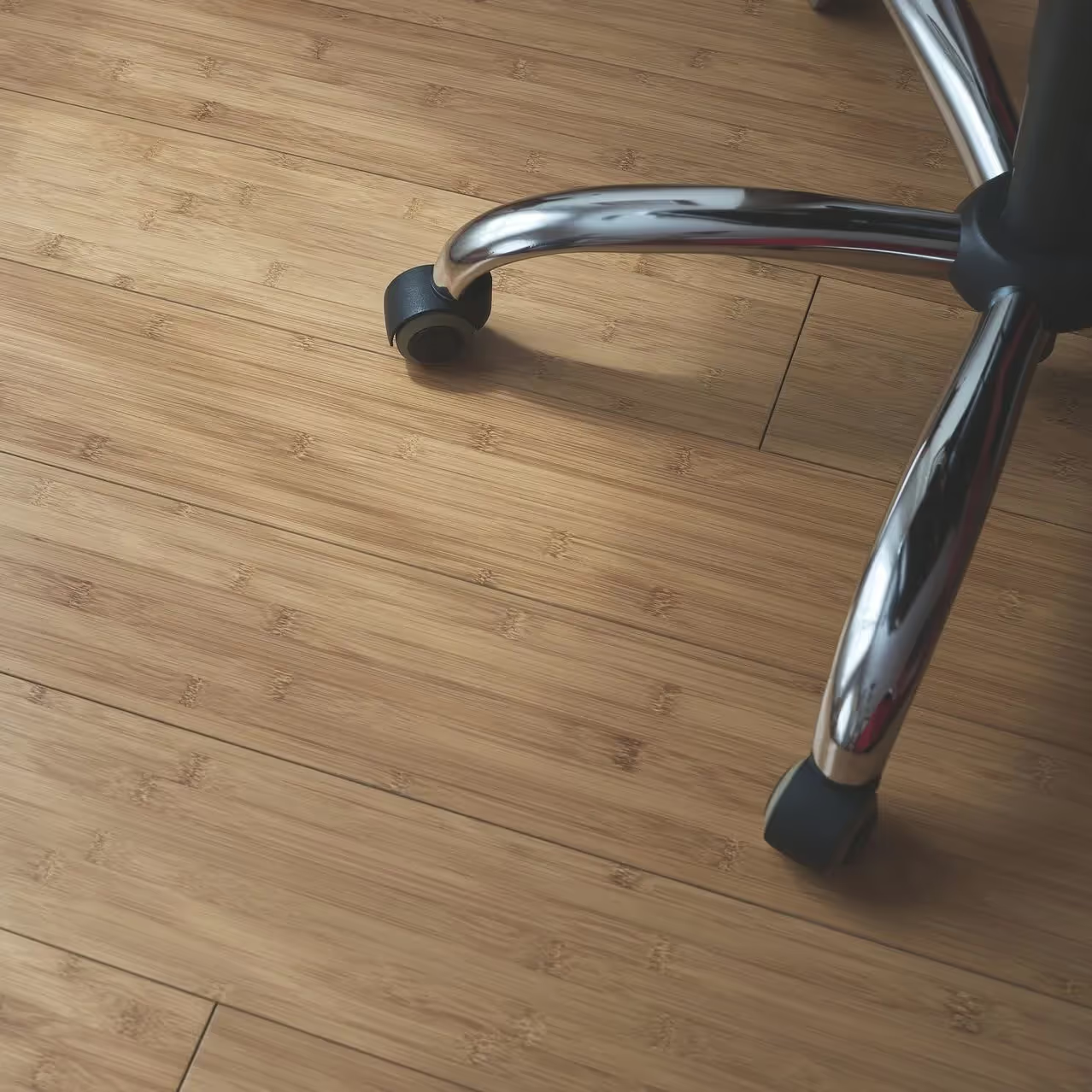
CREDIT: Rejuvenation Flooring Co
Bamboo has become a popular eco-friendly alternative to traditional hardwood. Technically a grass, it grows astonishingly fast and regenerates after harvesting. It’s hardwearing, contemporary, and can give you that sleek wood-like look — just make sure you’re buying from a responsible manufacturer.
Pros:
- Bamboo grows incredibly fast — it’s ready to harvest in just 5–7 years.
- Durable, stylish, and available in a wide range of finishes.
- A good alternative to hardwood if responsibly sourced.
Cons:
- Not all bamboo is equal — some products are heavily processed and use high levels of glue or formaldehyde.
- Transport impact can be high as most bamboo comes from Asia.
- Can be less stable in humid environments.
Solid wood flooring is the classic choice — made from a single piece of timber, it has a natural beauty and character that develops even more over time. When sourced responsibly, it’s a durable and repairable option that can last for generations, making it a strong contender for sustainable design.
Pros:
- 100% natural material and renewable when responsibly sourced (look for FSC or PEFC certification).
- Can be sanded and refinished multiple times, extending its life for decades.
- Long-lasting and easy to repair rather than replace.
Adds warmth, value, and a timeless aesthetic.
Cons:
- Sensitive to humidity and temperature changes — can warp or shrink if not acclimatised.
- Uses more solid timber than engineered wood, so resource demand is higher.
- Not ideal for areas with underfloor heating or high moisture.
- Typically more expensive than engineered alternatives.
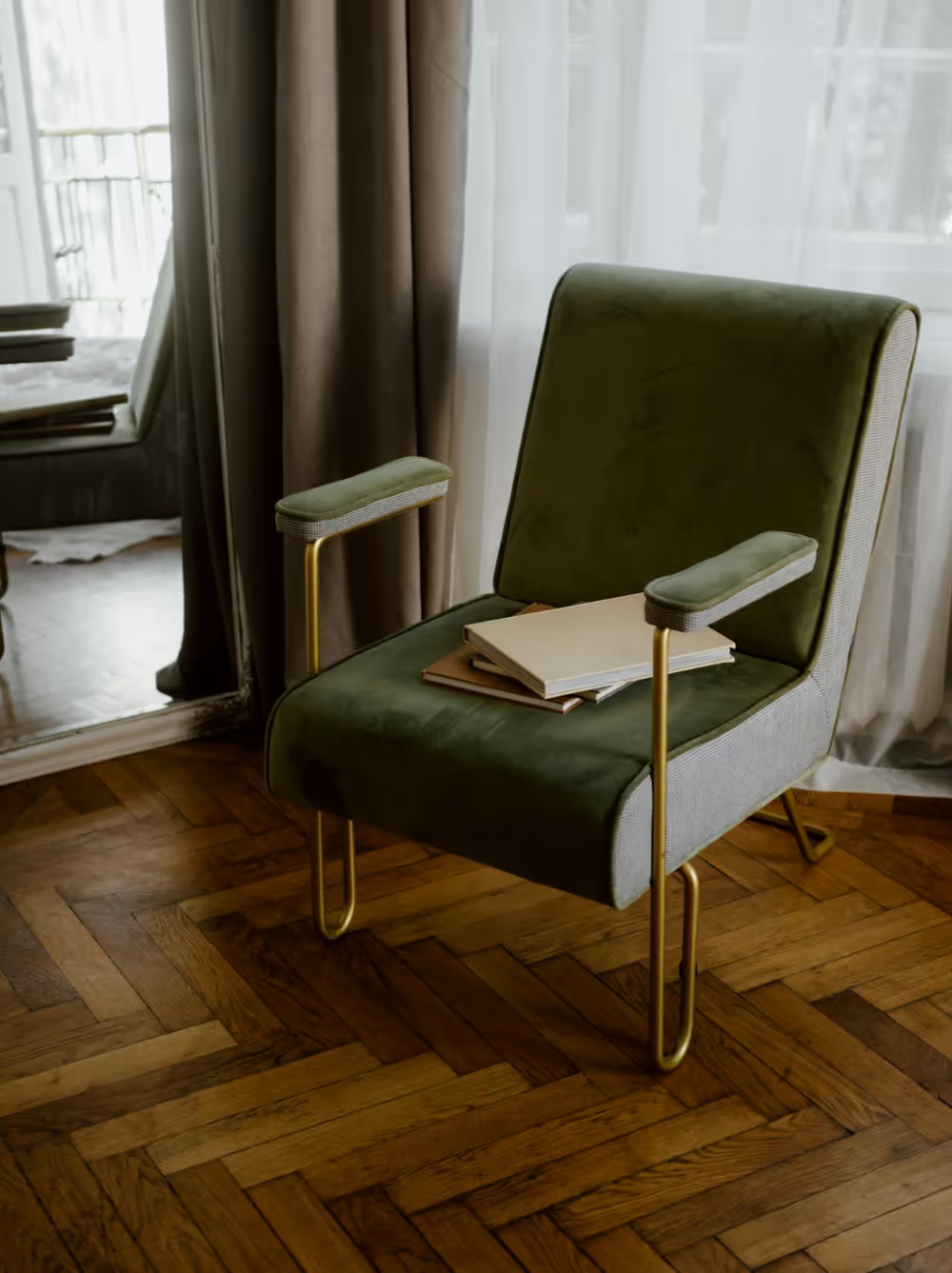
CREDIT:Polina Kovaleva
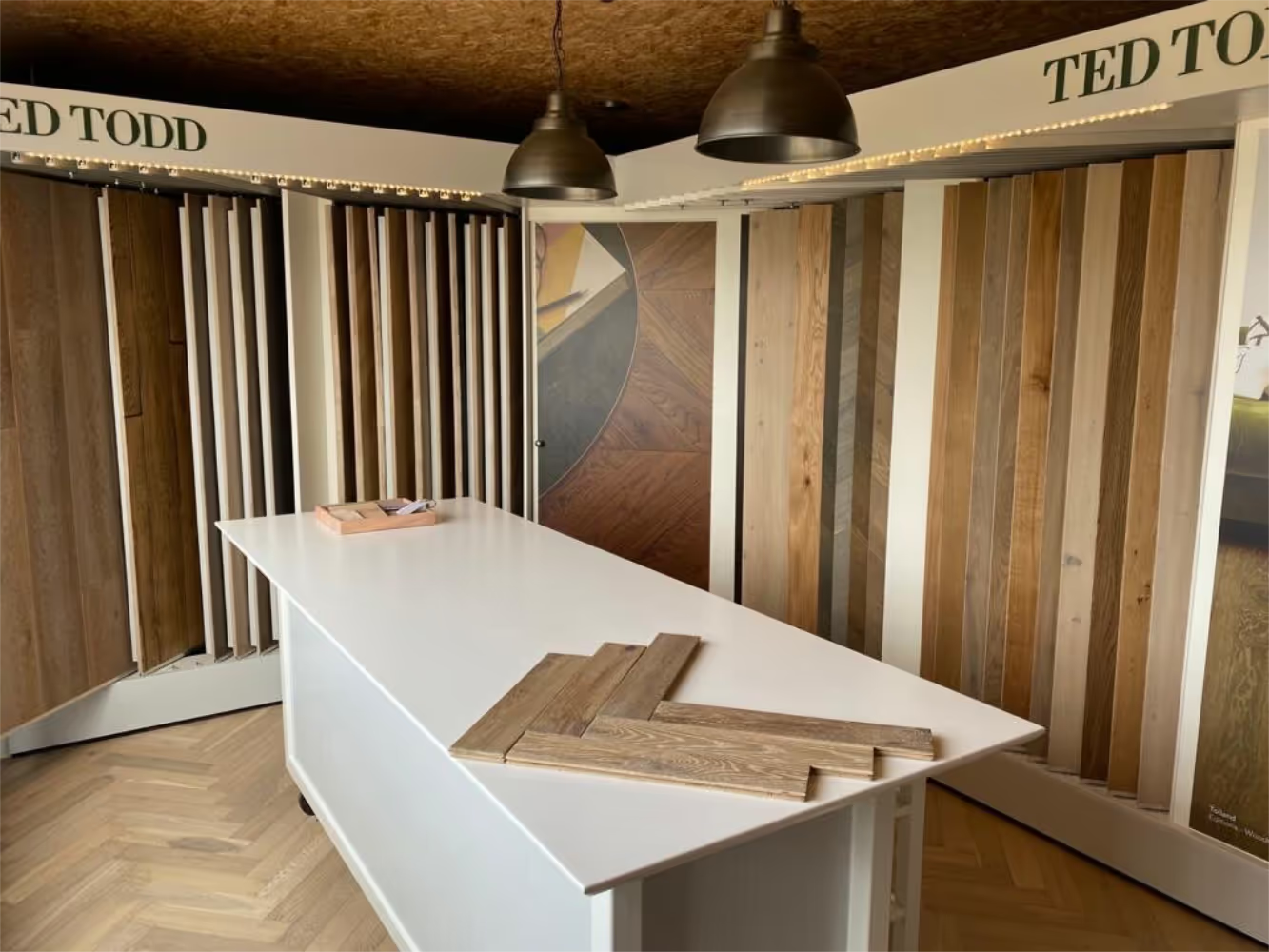
CREDIT: Long Lane Carpets & Flooring IOW
Engineered wood flooring gives you the look and feel of solid timber, but with greater stability and often a smaller environmental footprint. It’s made from a thin layer of real wood bonded to layers of plywood beneath, meaning it uses less solid wood overall.
Pros:
- Uses less hardwood than solid planks, so it’s a more resource-efficient choice.
- More stable and less prone to movement from humidity or temperature changes.
- Works well with underfloor heating.
- Available pre-finished, reducing the need for on-site sanding or finishing.
- Look for FSC or PEFC certification to ensure responsible sourcing.
Cons:
- Can only be sanded and refinished a limited number of times (depending on top-layer thickness).
- Quality varies widely — cheaper versions may have thinner veneers or lower-grade cores.
- Not recyclable or biodegradable due to its layered construction and adhesives.

CREDIT: Ted Todd Flooring
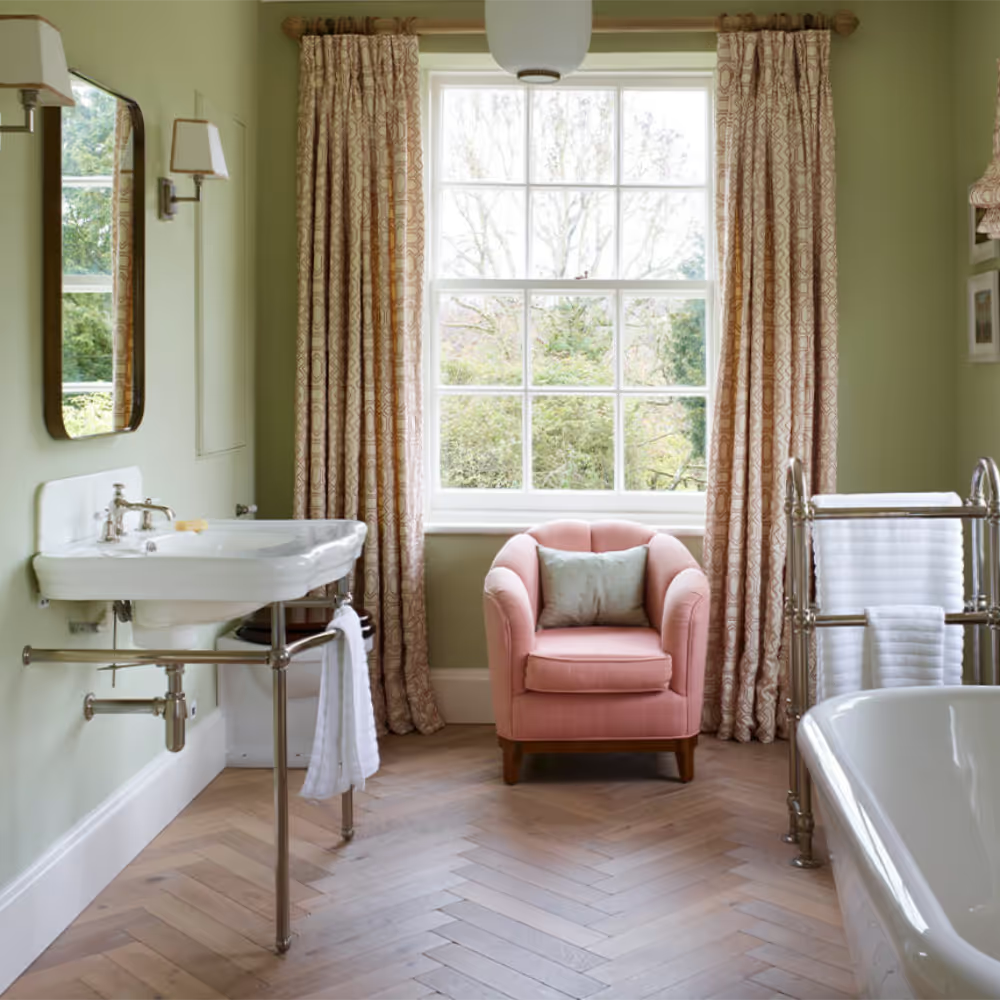
CREDIT: Ted Todd Flooring

CREDIT: Ted Todd Flooring
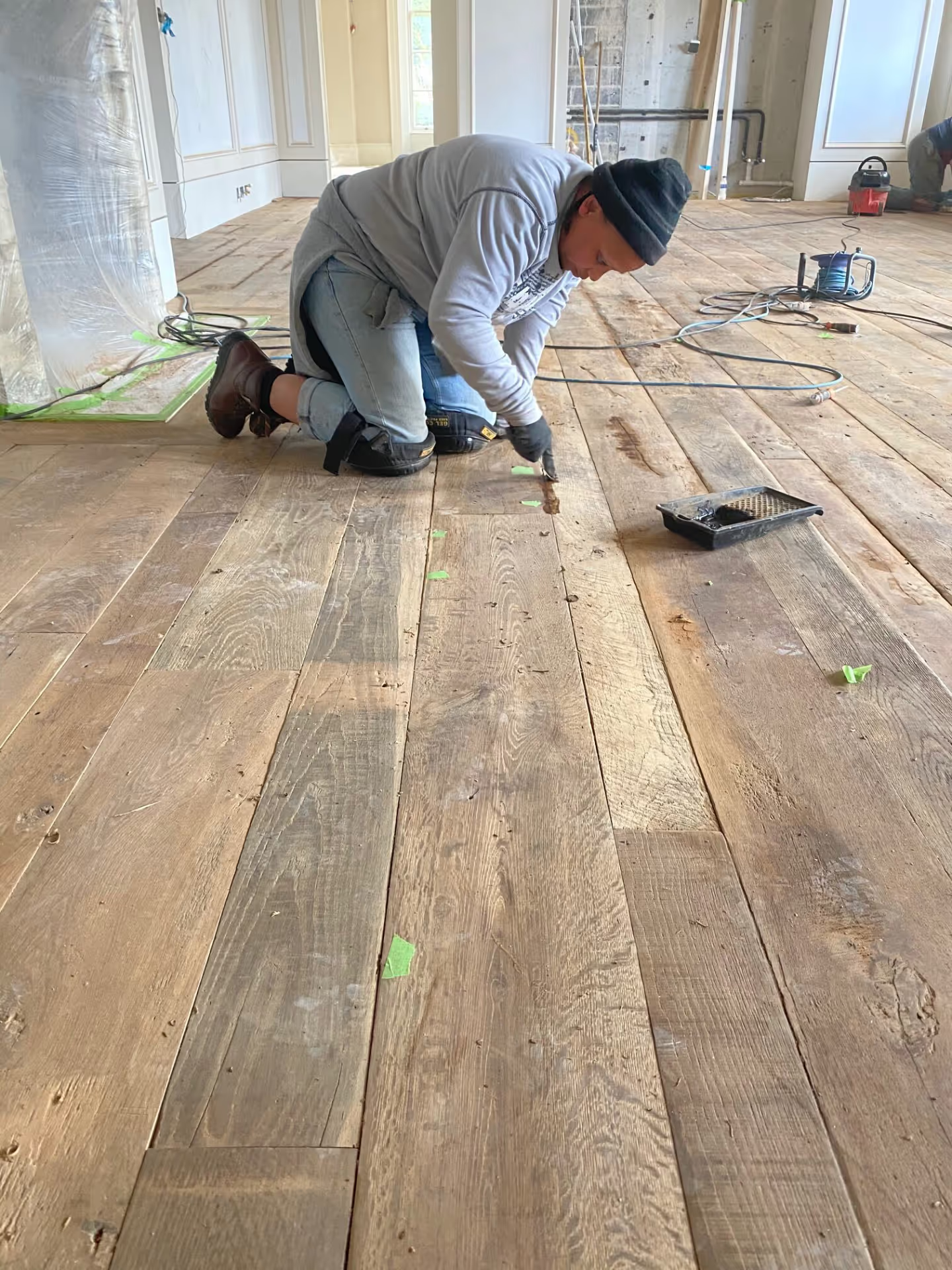
CREDIT: The Reclaimed Flooring Co
Reclaimed wood is arguably the most sustainable way to enjoy real timber floors. Each piece carries a sense of history, often showing subtle wear, old nail holes, or patina that add unique charm. It prevents usable materials from going to waste and brings instant warmth and authenticity to a space.
What's currently hiding under your carpet? If wooden floorboards, then consider getting them sanded and varnished.
Pros:
- No new timber required — completely reuses existing material.
- Full of character and individuality.
- Usually harder and more stable than new timber, as it’s had time to season naturally.
- Perfect for period properties or spaces where you want depth and soul.
Cons:
- Sourcing the right size and amount can take time.
- May require cleaning, de-nailing, or planing before installation, but buying from a flooring specialist means this is already done.
- Inconsistent thicknesses or wear levels can require an experienced fitter.
- Often more expensive than new wood due to the preparation work involved.
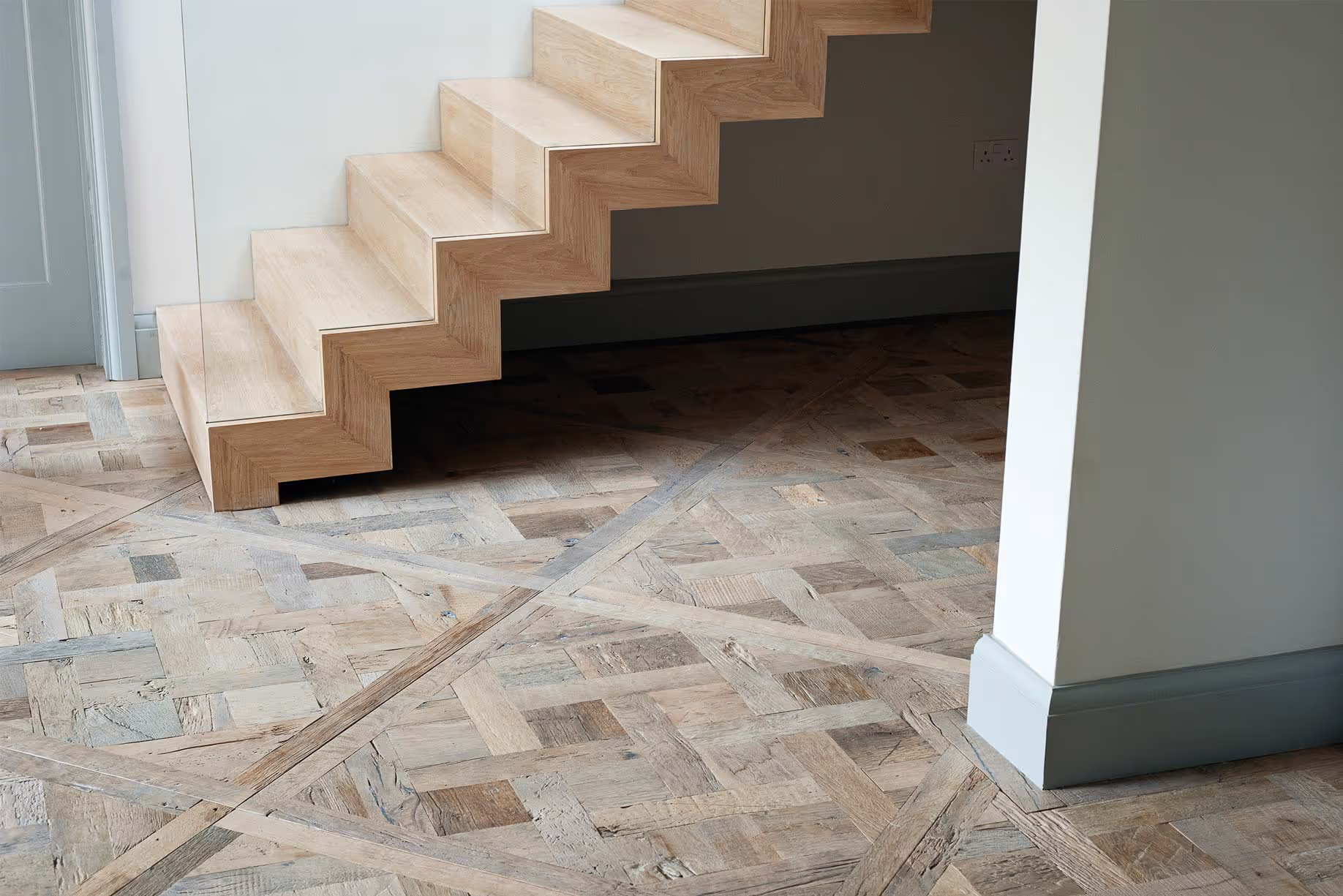
CREDIT: Ted Todd Flooring
Linoleum is making a well-deserved comeback — and no, it’s not the same as vinyl. Made entirely from natural, biodegradable materials like linseed oil, cork dust, and jute, it’s one of the original eco floorings. It’s also stylish again, with modern colours and patterns that look great in kitchens, hallways, and creative spaces.
Pros:
- Made from natural materials — linseed oil, jute, cork dust, and wood flour.
- Biodegradable, durable, and easy to clean.
- Available in a wide range of colours and patterns.
Cons:
- Often confused with vinyl, which is a synthetic and less sustainable alternative.
- Can yellow slightly over time (“ambering”) though this usually evens out with light exposure.
- Needs proper sealing to avoid moisture damage in wet areas.

CREDIT: Murnane Floors
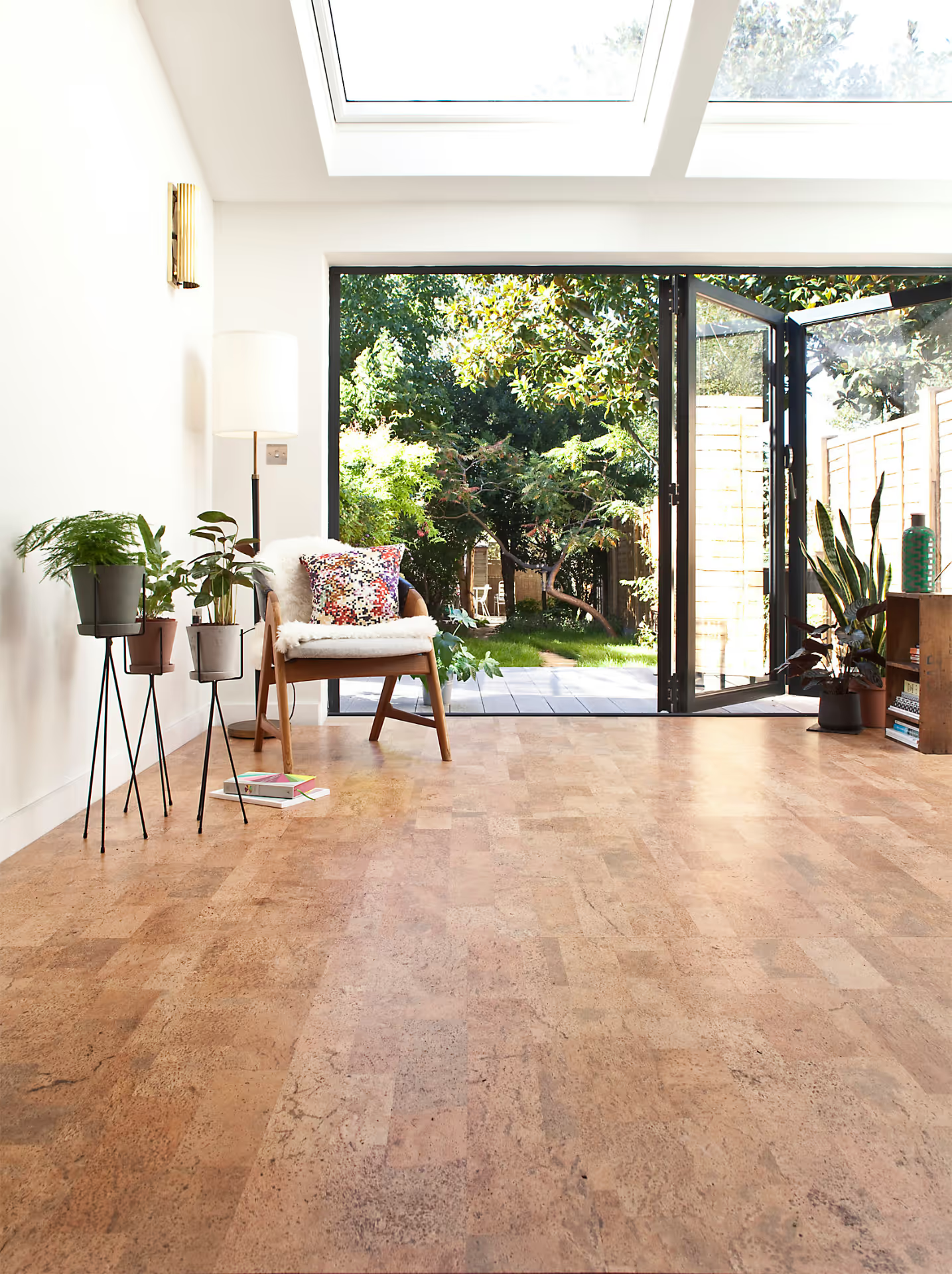
CREDIT: The Colour Flooring Company
Cork is one of those wonderfully underappreciated natural materials. Harvested from the bark of cork oak trees without harming them, it’s soft underfoot, beautifully tactile, and naturally insulating. It’s especially appealing for spaces where you want comfort, warmth, and a quiet, calming atmosphere.
Pros:
- Made from the bark of the cork oak tree, which regenerates — no trees are cut down.
- Soft and comfortable underfoot with natural sound and heat insulation.
- Naturally resistant to mould, mildew, and insects.
Cons:
- Can fade in direct sunlight and dent under heavy furniture.
- Needs resealing every few years to stay protected.
- Limited colour and style options compared to wood or tile.
Tiling is an obvious choice for bathrooms and kitchens, but tiled make wonderful floors in living spaces and bedrooms. If you're worried about it feeling cold underfoot, consider underfloor heating or simply put down a decorative rug.
Tiled floors are incredibly durable and come in an endless variety of materials, finishes, and colours — from classic terracotta to sleek porcelain and natural stone. When chosen carefully, tiles can be a very sustainable option thanks to their longevity and low maintenance needs. However, their environmental impact varies widely depending on the raw materials, manufacturing process, and distance they travel.
Handmade encaustic tiles are also a good option. A positive is that there is no firing process, but a negative is that the cement content means they can carry a high carbon footprint unless produced responsibly.
Pros:
- Extremely durable — often lasting a lifetime with minimal maintenance.
- Ideal for underfloor heating and spaces where water resistance is important.
- Many tiles (especially porcelain) are made with recycled content.
- Natural options such as terracotta or stone can be reclaimed or locally sourced.
- Low VOC emissions once installed — no ongoing chemical off-gassing.
- Easy to clean and maintain without harsh chemicals.
Cons:
- High energy consumption in manufacturing, especially for porcelain and ceramic tiles.
- Imported tiles can have a significant carbon footprint.
- Hard and cold underfoot without rugs or heating.
- Grout can stain or discolour over time and may need periodic resealing.
- Difficult to recycle once removed.
Tip: For the most eco-friendly option, look for tiles made in the UK or nearby Europe, preferably from recycled or reclaimed materials. Some modern porcelain ranges now contain up to 70% recycled content. You can also pair them with natural fibre rugs to soften the look and add warmth.
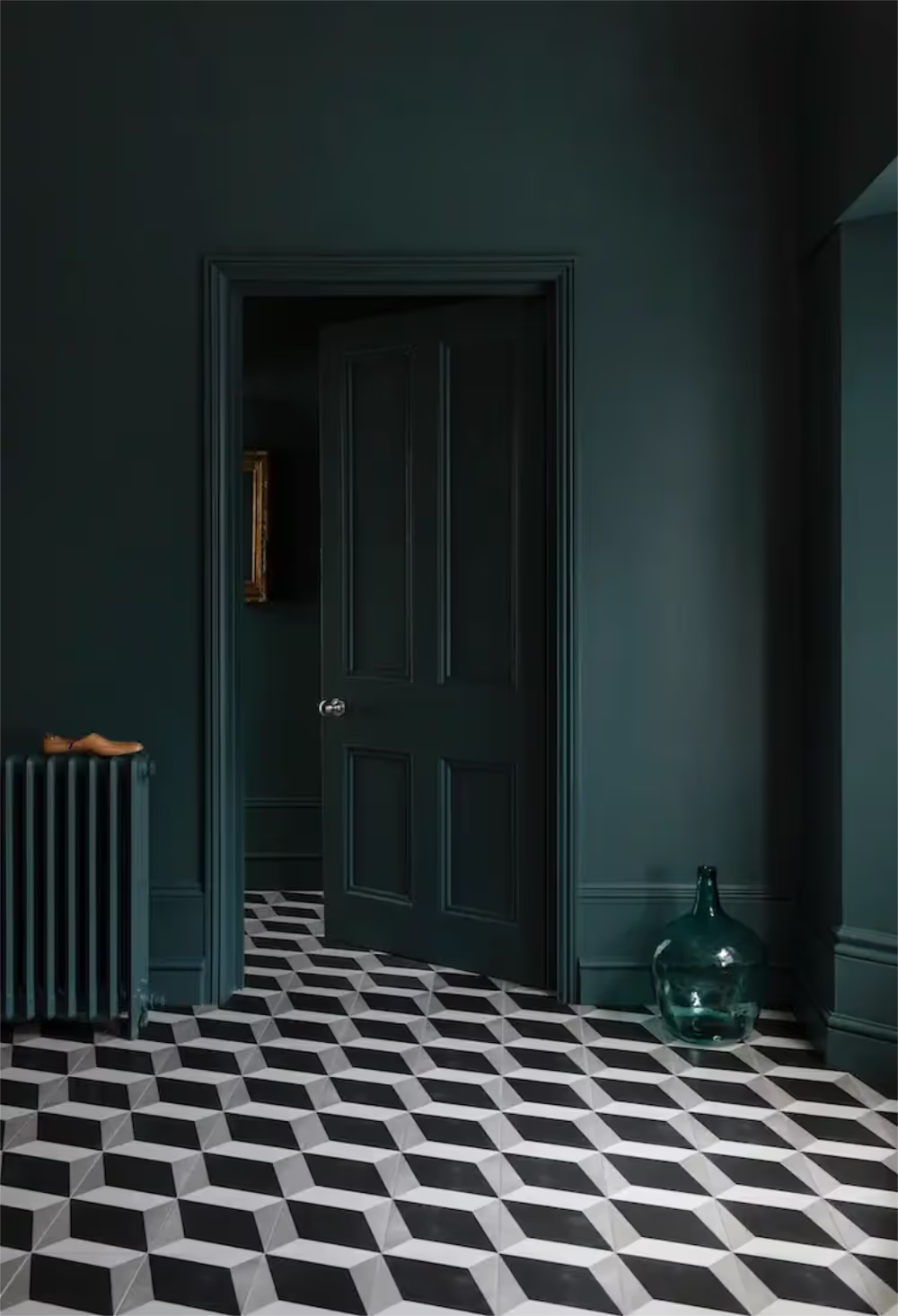
CREDIT: CDT Tiling
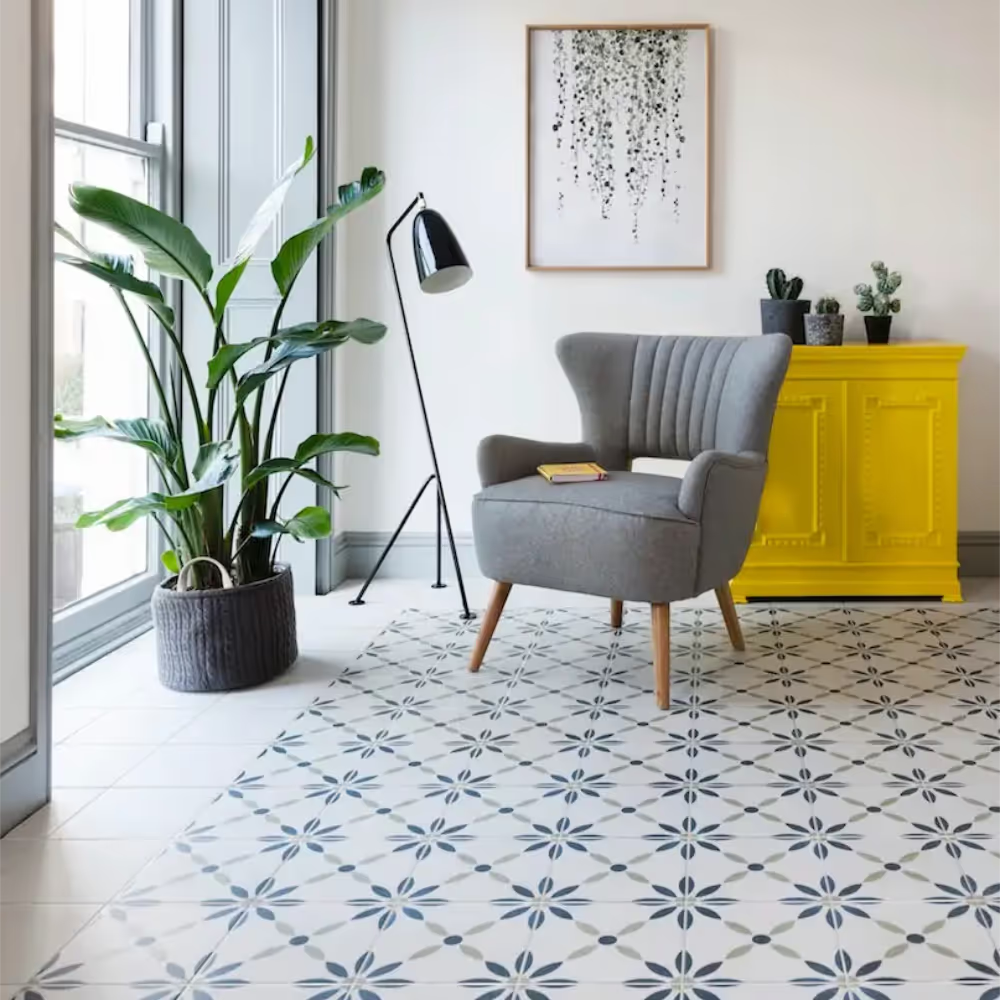
CREDIT: CDT Tiled

CREDIT: Quorn Stone
When choosing a sustainable floor, think about the full lifecycle — where it comes from, how it’s made, how long it will last, and whether it can be reused or recycled later. A floor that’s durable, repairable, and timeless in style is almost always the greener choice.
And remember, sustainability isn’t about perfection — it’s about making better choices, one step (or one floorboard) at a time.